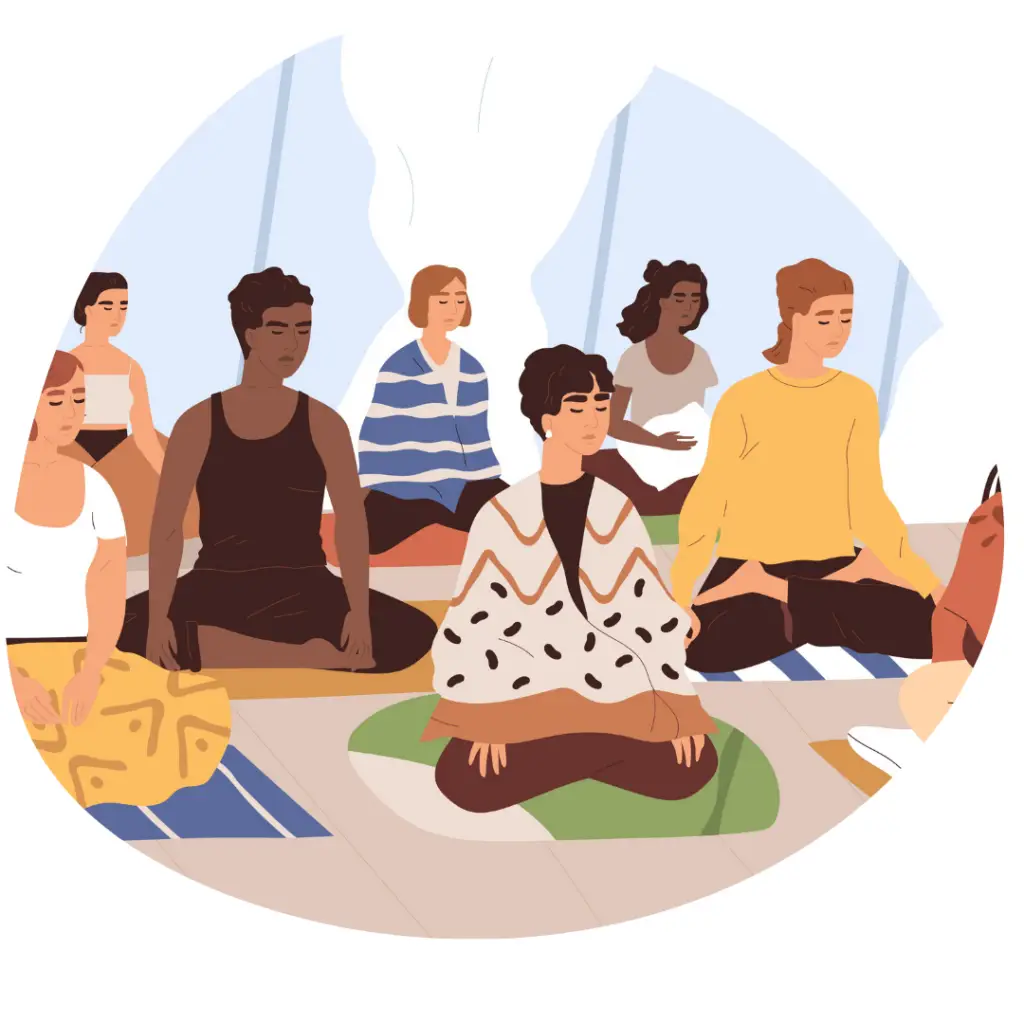Share this article:

So, you’re taking the plunge into Kundalini Yoga! Maybe you’re feeling a little nervous or just curious about what makes this style so unique compared to Hatha or other forms of yoga. Whatever sparked your interest—whether it’s a friend’s recommendation, a curiosity to explore something new, or the desire for a deeper connection—this guide is here to help. I’ll walk you through the typical flow of a Kundalini class so you can show up feeling prepared, relaxed, and ready to enjoy the journey.
Most Kundalini Yoga classes follow a similar structure:
Each Kundalini Yoga class begins with tuning in using the Adi Mantra. This mantra helps set the tone for practice, creating a mindful space and setting an intention for what you wish to experience. The Mangala Charn Mantra can be used after the Adi Mantra to add a circle of protection around the practitioners, but this is optional.

How to Tune In:
Chant the Adi Mantra three times: “Ong Namo Guru Dev Namo,” which means “I bow to the Creative Wisdom, I bow to the Divine Teacher within.” If you wish or are led by the instructor, also chant the Mangala Charn Mantra three times: “Aad Guray Nameh, Jugaad Guray Nameh, Sat Guray Nameh, Siri Guru Dayvay Nameh,” which means “I bow to the Primal Wisdom, I bow to the Wisdom of all ages, I bow to the True Wisdom, I bow to the transparent and great Wisdom.”
Sit in Easy Pose (Sukhasana): Place hands in Prayer Pose (Pranam Mudra).
Relax: Take a few deep breaths, releasing any tension in your shoulders, jaw, and abdomen.
Set an Intention for your practice or connect with your higher self.
If you want to learn more here is a quick video on how to tune in with the Adi Mantra:
Warm-up exercises in Kundalini Yoga are optional and may vary by class. They typically include one to three exercises, such as spinal flexes, life-nerves stretches, or stretch pose, to prepare/warm-up the spine or other parts of the body for the kriyas that follow. Some classes may also include a brief pranayama or breathing exercise in addition to or instead of warm-up exercises; breath of fire is commonly used to warm up the body before beginning a kriya.
The kriya segment often takes the greater portion of the class. A kriya is a specific sequence of exercises, breaths, and sounds designed to produce a particular stable energetic state. The word kriya comes from Sanskrit, meaning action, deed, or effort. Different classes will focus on different kriyas, and some classes may include more than one kriya if they are on the shorter side; if you want to get a sense of what a kriya looks like you can explore many of these in the practice section of this website.
After completing the kriya(s), you’ll transition into deep relaxation. This phase allows the effects of the kriya to settle within your body, balancing energetic, physical, emotional, and mental aspects of yourself. This is also when your parasympathetic nervous system has a chance to heal and reset. You may listen to a gentle mantra and/or musical recording, the sound of the gong being played, or just relax in silence. I personally find this to be my favorite part of the practice!
After relaxation you will move and stretch your body gently and make your way back to a seated posture for meditation. All of the exercises you’ve done throughout the class are meant to prepare you for this moment where you can deeply connect. Meditations can vary in length, intensity, and focus, depending on the class. You can also find additional meditation options in the meditation section of this site: LINK.
Just as the class begins with tuning in, it concludes with three long Sat Nams, sealing the energetic experience and bringing closure to the class. Often, the class also ends with “Long Time Sun,” a song that serves as a blessing, encouraging you to connect with yourself as you move forward in your day. There are many beautiful versions of the “Long Time Sun”. Here are two of my favorite versions:
Each Kundalini Yoga class is a unique journey that has the potential to help you connect more deeply with yourself and tap into your inner energy. The most important part is to come with an open heart, and enjoy each part of the class at your own pace.
Each person has a unique first experience with Kundalini yoga. I would love to hear about how your first class went. Share below!

The Areté Writing Team is a dedicated group of contributors passionate about creating meaningful and inspiring content that embodies the values of growth, mindfulness, and community. Together, they bring a diverse range of expertise and perspectives to craft articles, guides, and resources that resonate with readers and support their journey toward excellence and self-discovery. With a shared commitment to quality and authenticity, the team strives to make Areté a trusted source of knowledge and inspiration for all.
Follow us on social media for daily inspiration, free resources, and community updates. Find us on Instagram, Facebook, YouTube, and LinkedIn.
Copyright 2024 © Areté. All Rights Reserved.

Fill out the form below, and we will be in touch shortly.